
Legendary brands: Umbro's history
Starting from the back room of a pub in Cheshire, the Humphreys brothers built an empire
September 1st, 2019
Wilmslow is a small town located south of Manchester, in the county of Cheshire. According to a 2011 census, there are not even 30,000 inhabitants, yet it has become famous in the world for some particular facts. For example, on 1 August 1984, in a peat bog located in Lindow Loss, two workers found a mummy of bog and then renamed Lindow Man. Also known as Pete Marsh, the body belongs to a man of about 25 years and it is estimated that his death occurred in the first century after Christ. Wilmslow was also at the center of the scene in March 1997 when the IRA detonated a bomb near the railway station. On that occasion there was no wounded, but the news made a sensation.
The town in question, moreover, is also famous for having given birth to one of the most famous sports brands in the world. Year 1924, Harold Humphreys and his brother Wallace in the back room of a pub in Wilmslow founded the brand Umbro, which takes its name from the two brothers. Originally born as Humphreys Brothers, the brand decides to focus strongly on a new game that was spreading rapidly in those years, in England: it is the beginning of the secular love story between Umbro and football. This season Umbro celebrates its first 95 years. Over almost a century Umbro has marked victories and dressed football legends. Stunning kits with a variety of unconventional shapes, patterns and colors, which have consolidated and increased the link between football and fashion, inside and outside the pitch.
95 kits will also be showing from 12 to 14 September at BASE Milano, during the free exhibition "Umbro 95 - Style in the Field", created by nss sports in collaboration with Classic Football Shirt. During the exhibition will be presented historical jerseys such as Manchester United’s worn by the "class of '92" but also Brazil’s for World Champion at USA 94, or those of Inter Milan, Lazio and Napoli of the early 90s. Everything will be supported by talks with experts, workshops and a very special gaming area.
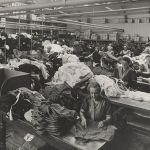
Umbro in history
In 1934 the FA Cup was won by Manchester City, who overtook Portsmouth for 2-1 in the final. The last victory of the Cup in question, for the Citizens, dates back to 2011. On both occasions and after seventy-seven years, the shirts of Manchester City always wore the same signature: Umbro.
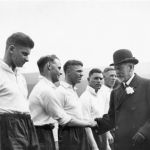
On the occasion of the 1934 final also Portsmouth wore the Tangeru shirt of the Humphreys Brothers, and it is said that at the end of the match Manchester City sent a message to the Umbro itself thanking the company "for the comfort, quality and elegance of the uniform". Even the people in the stands were pleasantly surprised by the kits. Ultimately, the first major public release of the brand was a total success.
With the arrival of the Second World War, the brand did not back down and decided to help England in its own way: the production of the football jerseys was momentarily paused and the Umbro began to churn out uniforms and equipment for the English army. In addition, during those terrible years in the company cafeteria 250,000 soldiers were welcomed.

Going back to football, the brand is inevitably linked to the English tradition, and it is no coincidence that it has accompanied the Three Lions story for generations and generations. Not only that: Umbro has entered a series of memorable frames sewn together through the style of this unique brand, which represented the main theme of some fundamental moments in the history of football across the Channel.
However, before retracing some memorable stages, one must take a step beyond football: in 1958 Roger Bannister entered history as the first athlete capable of traveling a mile in less than four minutes. All this while dressing Umbro. In this photo Bannister is exhausted but happy, he turns to the sky closed and tired eyes, but his wide open mouth tastes of liberation and sweaty glory. Around him, amazed people and photographers intent on seizing the moment.
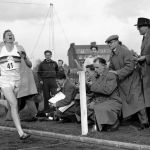
World victories
Despite the visceral connection with England, it is Brazil that brings Umbro for the first time on the roof of the world: the Seleçao in 1958 beats Sweden for 5-2 and raises one of its five World Cups, four of which are "dressed" with the English brand. Note: on that occasion there was also a very young Pelè, just seventeen years old. One of the most famous photos portrays him crying leaning on the piece of Gilmar, the legendary Brazilian goalkeeper we had talked about here.
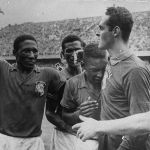
Umbro, eight years later, will accompany the Three Lions to the victory of the home world: in 1966 the brand had practically monopolized the competition, given that 15 out of 16 teams were wearing the Humphreys Brothers brand. Meanwhile, in England, 85% of club teams wore Umbro sweaters. Little curiosity: despite England being the host country, Germany was drawn as a home team for the final. The English players were then forced to wear that red shirt that would soon become iconic.
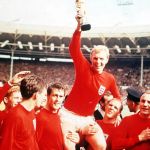
Another significant year for the world history of Umbro is 1970: the Jules Rimet World Cup is staged in Mexico and in the end it will be Brazil that will triumph. The British brand in that competition became the protagonist thanks to the revolutionary Aztec breathable sweaters, which allowed players to better face the heat of the Mexican summer.
Cups, shoes, suits and unforgettable characters
The Umbro brand was worn on occasion of some historic Champions League victories, such as Celtic in 1967. The brand also wore Liverpool in 1977 and Manchester United in 1999, when the Red Devils staged an incredible comeback in the final minutes of the match thanks to goals from Sheringham and Solskjaer, both arrived in the recovery minutes.
In this image the English striker slips in enthusiasm, spreading his arms and showing the whole world all his joy, enhanced even more by the bright red of the Umbro shirt.

And it is precisely in that decade that Umbro probably lives its moment of greatest splendor. It starts with Italia '90 and with one of the most symbolic Three Lions' sweaters: the classic white is added touches of quality and elegance thanks to the bands on the edges of the sleeves and the collar finished in blue, while along the body of the jacket fall precise striations which once again underline the brand's attention to simple but non-trivial details. The same goes for the blue night shorts made special by small classy mustache on the sides, for what will remain in the annals as one of the most iconic football suits ever. Also thanks to some exceptional models.

The shirt in question is definitely the mother of that dressed for example from Lazio in the 1992-1993 season: a strong similarity in style, with white that obviously leaves space (also) to heavenly. Reference model: still Gascoigne.
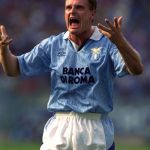
Umbro entered a tense leg in the 90s thanks to the Specials: born in 1992, this made in Italy shoe model made with fine leather has characterized the following two decades in the football world. Light, elegant, exquisitely functional.

Returning to history and its course, from the end of the 80s to the new millennium the Umbro brand has indirectly attracted the spotlight on many occasions, all thanks to characters and unforgettable moments linked to English football. Like:
#1 Terry Butcher with the bloody shirt after the race with Sweden on September 6, 1989, valid for access to the World Championships of his England. An image that seems to be taken from a Tarantino film rather than from a soccer field.
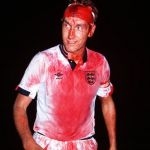
#2 The raised collar of Cantona, trademark of the genius and the unruliness of the French champion.

#3 Owen's goal against Argentina, 100% Umbro from head to toe. A wonderful pearl for the attacker who, three years later, would raise the Golden Ball.

#4 The model Alan Shearer, who has always worn Umbro during his career.

#5 Wayne Rooney's return to Everton, with the branded shirt worn at the time of signing, of course.
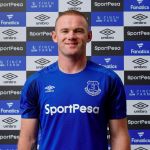
Umbro's present
If in some moments of the past Umbro practically had a monopoly in some competitions, today the situation has changed: the number of technical sponsors has increased, and the giants like Adidas, Nike and Puma have secured large market shares. Umbro, for its part, did not however give up and tried to expand its horizons elsewhere, in new and fertile territories: the English brand has partnered with various African national football teams (Zimbawe, Ethiopia, Botswana), with Canada and Jamaica.
All without obviously forgetting the club teams. The Umbro also reached practically every corner of the globe: Brazil with Cruzeiro and Santos, Holland with PSV, Ghana (!) With Hearts of Oak, Argentina with Estudiantes and many, many other. Obviously in this list there is also England, where Everton continues to show off the double diamond of the English brand.
Ultimately, Umbro continues today still continues to be appreciated, and recently it has entered with arrogance also to the world of futsal, launching on the market a shoe designed for this game, the Chaleira Pro. Agile and attractive from the aesthetic point of view, this model has immediately conquered the international futsal scene.

Moreover, recently, there was an important change at the top: in 2013 the Umbro was bought by the Iconix Brand Group fund, which decided to invest even more on football and signed a new sponsorship agreement with Everton , also proposing a new edition of the Specials, the Eternal. Before selling the brand, however, Nike (previous owner) has collected the legacy of the British national team, interrupting a centenary tradition that however, on balance, has indelibly marked the history of the Three Lions.
Umbro, for its part, has continued to collect important adhesions such as Pepe's, which due to its sliding closures decided to entrust itself first to Medusae 2, then to Medusae Elite 3 (first shoe without laces of the brand). The latter are also worn by Ashlyn Harris, goalkeeper of the US women's national football team who became a brand's ambassador. Great characters (among others, also John Terry and Fabio Capello), great recognition for a brand that still continues to impose itself on an international level. In the sign of the Double Diamond.
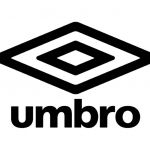
Final note: Umbro was the first brand to think of the reduced and less expensive version of the jerseys, to allow the little ones to wear their idols' shirts. Because football is basically a game, and games are children's stuff.








































.png)


.jpg)





.jpg)


















